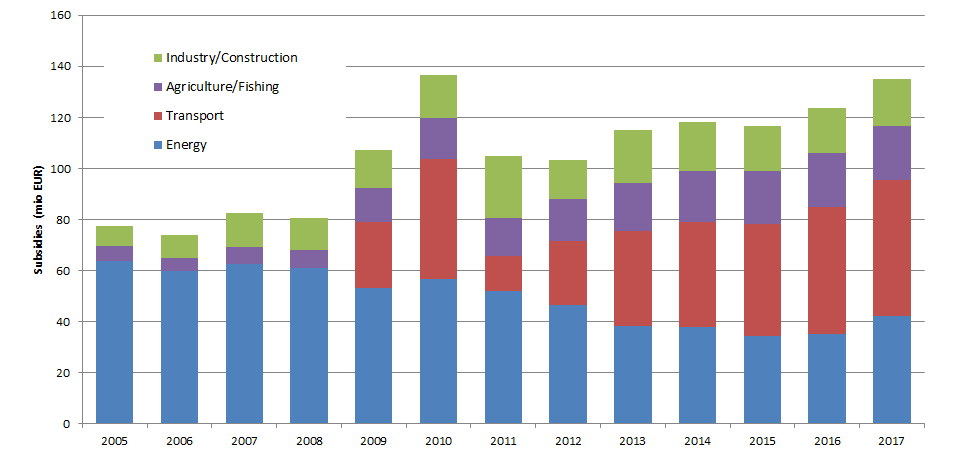-
-
-
-
-
-
-
-
Tools and collections
- Environmental atlas
- EIONET in Slovenia
- Environmental indicators
- IED devices
- Endangered species
- IS-waste

-
-
Tools and collections
- Environmental atlas
- EIONET in Slovenia
- Environmental indicators
- IED devices
- Endangered species
- IS-waste

- Home
- Podnebno ogledalo
- [PO] Multisectorial indicators
- Reducing environmentally harmful subsidies
[PO24] Reducing environmentally harmful subsidies

Key message

Subsidies that are contrary to achieving the goal of reducing GHG emissions do not decrease over the years. The value of the indicator is inconsistent with the long-term objective of the OP GHG: "graduated but significant reduction of the environmentally harmful subsidies". In comparison with the previous year, the harmful subsidies in 2017 rose again, and they are rapidly approaching the point where they were the highest. Excise duties on diesel fuel stand out the most and they increased for 7 % compared to the previous year. As subsidies drive consumers to higher GHG emissions, additional measures are needed to achieve a target reduction in GHG emissions, as if they were without these subsidies. Additional measures are usually also more expensive.
Charts
| Environmentally harmful subsidies | |
|---|---|
| 2005 | 77.39 |
| 2006 | 73.95 |
| 2007 | 82.34 |
| 2008 | 80.61 |
| 2009 | 107.29 |
| 2010 | 136.78 |
| 2011 | 105.02 |
| 2012 | 103.26 |
| 2013 | 115.18 |
| 2014 | 118.29 |
| 2015 | 116.75 |
| 2016 | 123.65 |
| 2017 | 135.23 |
Tadeja Janša, JSI-EEC, prepared as part of project LIFE ClimatePath2050 (https://www.podnebnapot2050.si/)








